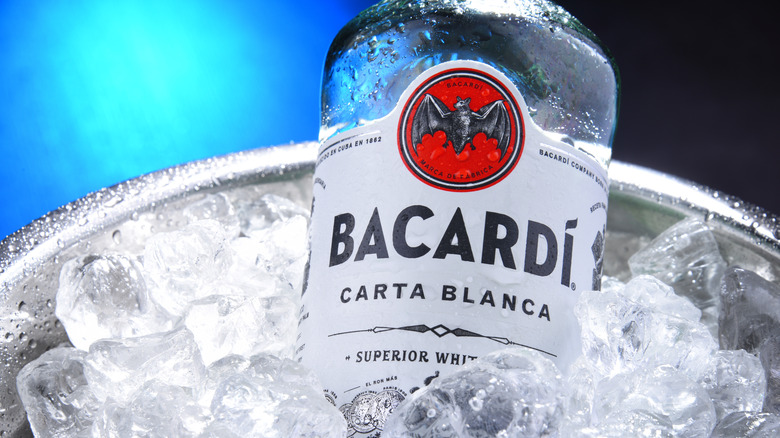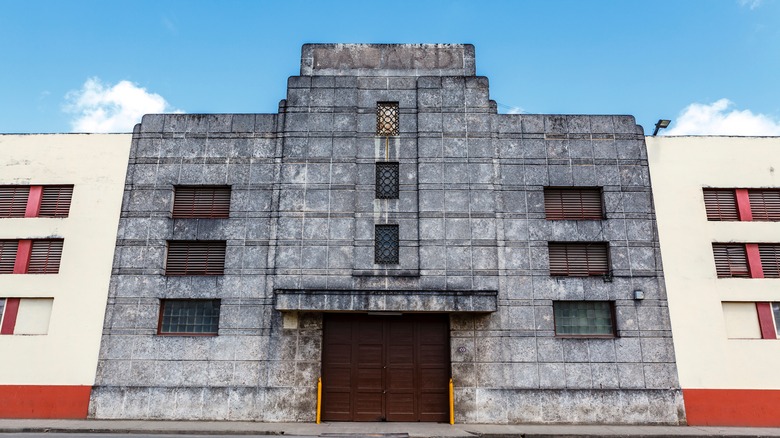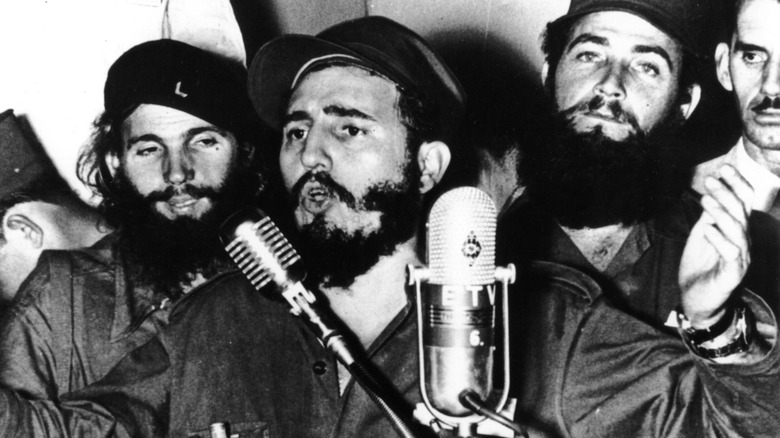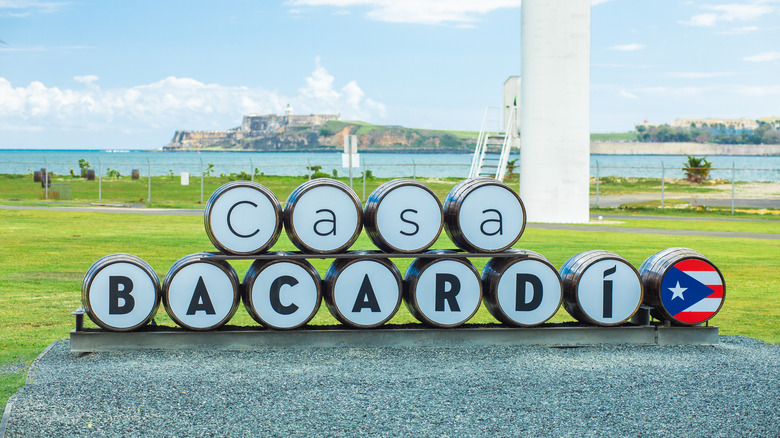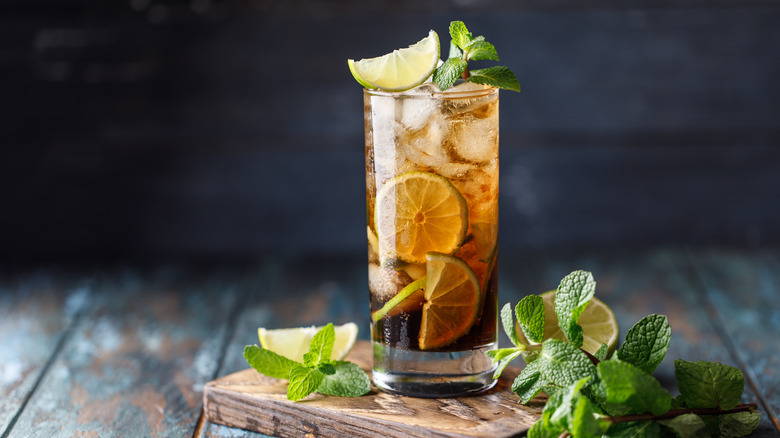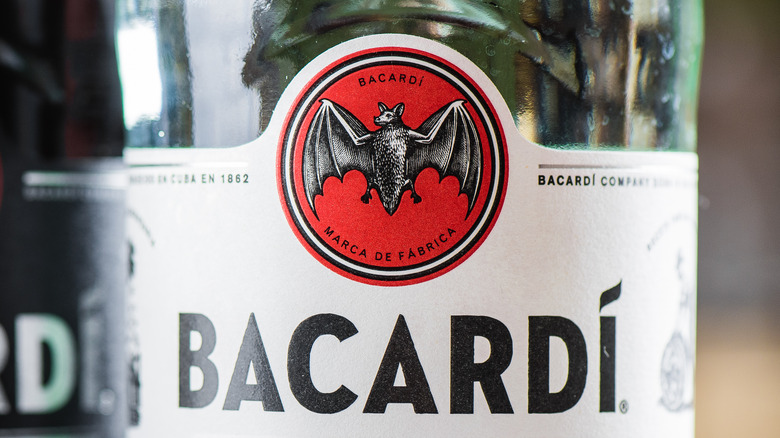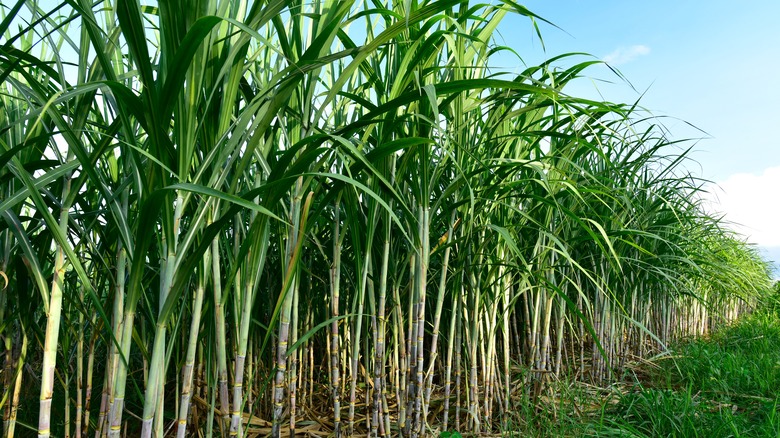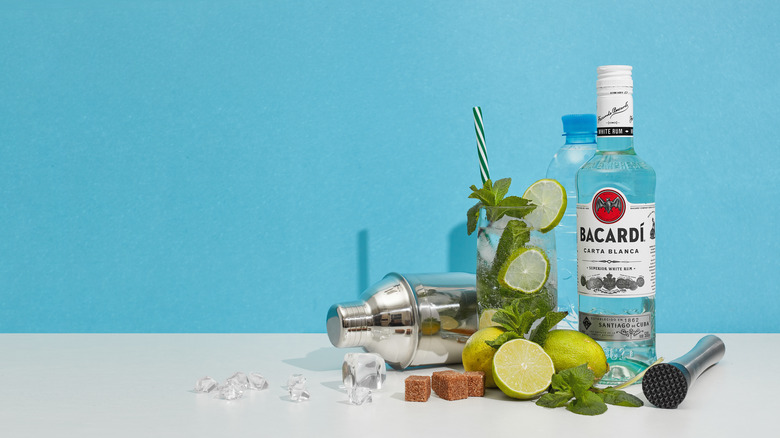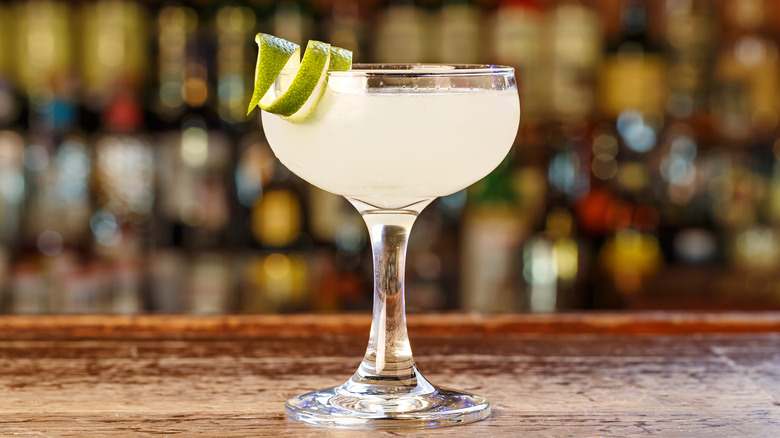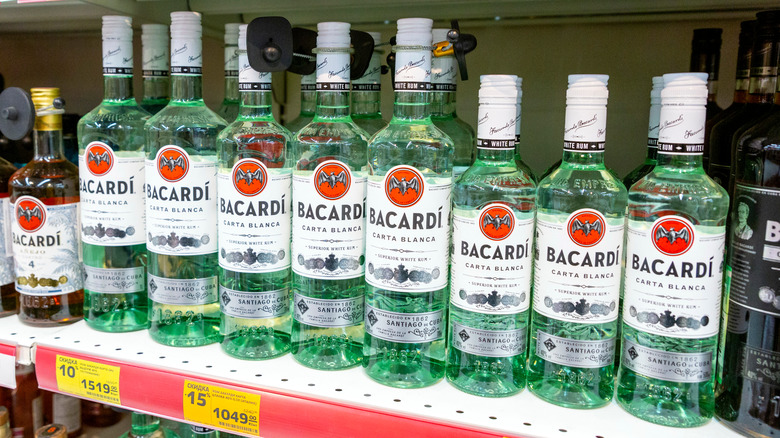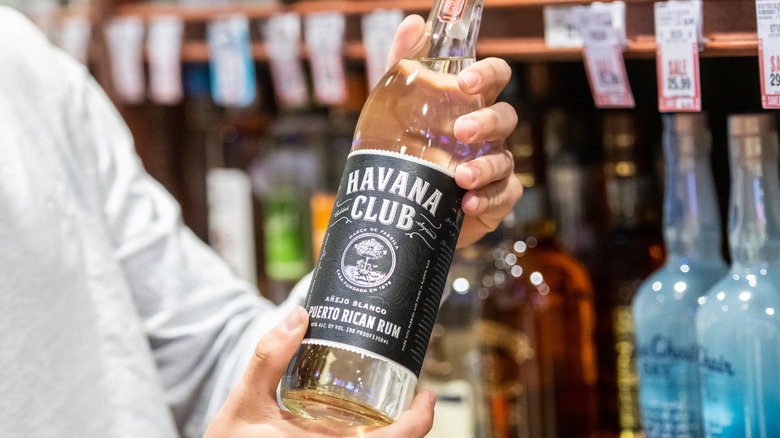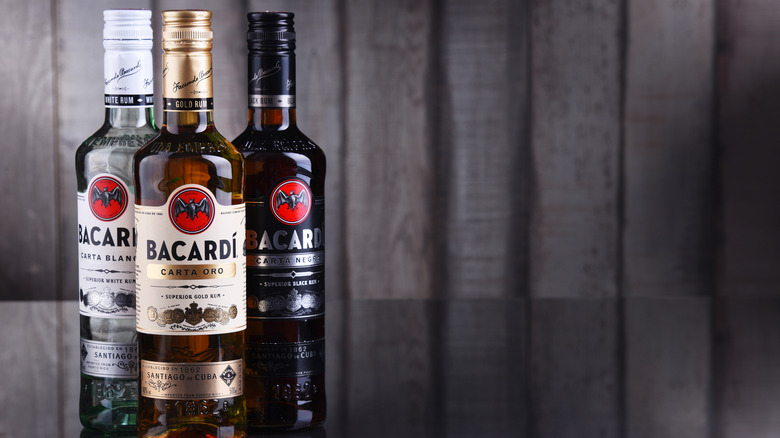Bacardi Superior Rum: The Ultimate Bottle Guide
There are certain brands that are instantly attributable to a spirit. When you think of scotch, you think of Johnnie Walker or Jameson in regard to Irish whiskey. Well, in the category of rum, there is only one brand that is widely synonymous with it, and that is Bacardi.
Since the brand was founded as a small-scale operation over a century ago, Bacardi has constantly grown with new expressions added to the lineup. In fact, in 2020, Bacardi saw close to a 4% boost in global sales, selling 17.8 million cases of its spirits worldwide. Of all of the new or old products in the Bacardi catalog, its signature white rum is still number one.
Bacardi Superior, to be exact, is the quintessential white rum that will take care of anything you need from the spirit. It is highly mixable, inexpensive, and comes from a long and storied history. Bacardi is one of the world's most recognizable spirits brands for a reason, beyond just making great rum. Here is everything you need to know about its flagship bottle, including its role in one of history's most infamous political revolutions.
HIstory of Bacardi
The history of the Bacardi brand dates back to 1862, when it was founded by Facundo Bacardi Masso after his family immigrated to Cuba from Spain when he was 16 years old. During that time, rum was made very cheaply and was not a very pleasant spirit to drink. Most rums were harsh and all of them were dark, two characteristics that Bacardi completely revolutionized.
After purchasing a small distillery in Santiago de Cuba, Bacardi refined the rum-making process by using his very own unique strain of yeast, aging in oak barrels, and filtering the distillate. Not only did these techniques make for a softer, more approachable spirit, but they also made for the world's first known white rum. It did not take long for this new revelation to catch on, as Bacardi expanded abroad with locations opening up in New York City and Barcelona.
This global presence really took off with the passing of Prohibition in the United States, though. Throughout the 1920s, tourists would visit Cuba to drink alcohol, and there was no product more prevalent than Bacardi's rum. The brand even took advantage of the new law and ran advertising campaigns specifically targeted at Americans who wanted to escape to a tropical paradise to enjoy a cocktail. In the years following, the Bacardi brand had to endure many different adversities, but nevertheless, it has remained one of the most iconic brands of rum in the world to this very day.
Bacardi fled communist Cuba
One of the many setbacks the Bacardi brand has survived throughout its history is the rise of communism in its home country. Throughout its lifespan up until that point, the Bacardi family was very outspoken and involved in the Cuban political landscape. In fact, during the rise of Fidel Castro, the Bacardis supported the eventual dictator and opposed Cuba's then-leader Fulgencio Batista.
However, after Castro's new communist government began taking shape, the complete destruction of all capitalism meant that any privately owned properties were taken over by the state. So, an announcement was made through the national radio that a state takeover of the distillery would occur, and the government sent military troops to shut down the brand's operation. Luckily, they had the location completely mistaken.
Meanwhile, in order to preserve what they had built, Bacardi saved some of its yeast strain and destroyed the rest so its distinct rum could not be replicated. Then, the operation was moved over to Puerto Rico, where it remains to this day. Since the Cuban government was unable to resurrect their country's beloved rum, they opened a new distillery to produce a nationally made and sponsored rum, Havana Club.
This departure and restart by Bacardi did not hinder its success, and the brand eventually grew to acquire brands of scotch whisky, gin, and tequila. Now, the Bacardi brand is synonymous with the island of Puerto Rico, despite its Cuban foundation.
Bacardi has survived everything from political revolution to natural disasters
In addition to political revolution and government exile, Bacardi has had to overcome many other obstacles since it was founded, one of which being the Cuban War of Independence. In the 1860s, Cuba was still a Spanish colony, but the desire for freedom and for the abolition of slavery was growing. Because the original sugar cane plantations that provided the Bacardi distillery with its molasses for making rum were operated through slave labor, many attacks on the crops were orchestrated by revolutionaries.
In 1874, the leadership of the Bacardi brand was passed down to Facundo Bacardi Jr and his brother Emilio, who was an activist for a free Cuba himself. In fact, one of Emilio's sons fought in the war for independence under a famous Cuban general, and Emilio even incited and participated in multiple revolts while he was president of the Bacardi brand.
Furthermore, there have been many natural disasters Bacardi has had to overcome to continue making its great rum. Not only have there been five different earthquakes and an innumerable amount of hurricanes, but the Bacardi Distillery also nearly burned down when a fire broke out. One of the symbols of this brand's perseverance is a coconut tree planted just outside the original distillery in Santiago de Cuba. It was planted by Facundo Bacardi himself and survived everything along with the brand, making "El Coco" reflective of Bacardi's endurance.
Famous cocktails were invented with Bacardi
It goes without saying that the most popular way to enjoy Bacardi Superior is through cocktails. Not only does Bacardi make a great drink, but there are also rum cocktails that were invented specifically with Bacardi and were popularized because of the brand's prominence. Perhaps the most famous of these is the Cuba Libre, which hails all the way back to the Spanish-American War. In 1900, a U.S. Army captain in Havana decided on a whim to mix a combination of Coca-Cola and lime juice into his Bacardi. After a few sips, the drink was so delicious he shouted, "por Cuba libre (to a free Cuba)!"
Another popular and historic cocktail, the daiquiri, is another that was invented with Bacardi in 1896. The first record of the drink is credited to Jennings Cox, who is known to have run out of gin before entertaining guests at his home in Cuba. Apparently, he utilized his stock of Bacardi and served drinks made with rum, lime juice, and brown sugar. Today, this same combination is cemented as one of the fundamental rum cocktails in existence. Plus, it eventually became the favorite drink of Ernest Hemingway, who was a regular drinker at Le Bodequito del Modio.
The bat logo is a reference to the very first distillery
If you look at any bottle of Bacardi, you'll notice its logo seems like it would have nothing to do with rum or with Cuba. The backstory behind the bat logo is actually credited to the wife of the brand's founder, Facundo Bacardi, Doña Amalia. Upon opening the first distillery with her husband in 1862, she noticed thousands of fruit bats flying around the distillery. This was because of the smell of molasses, which the bats were attracted to. Instead of exterminating the bats from the distillery, Doña Amalia thought of them as a symbol of good luck. So, the fruit bat became the official logo of the rum brand within the next several years.
This reverence for the animal is actually a common one throughout the rum industry. This is because fruit bats play an important role in sugar cane production, pollinating the crop and eating the insects that endanger it. Bacardi's respect for their beloved fruit bats is still celebrated today beyond their iconic logo.
The brand has its own pollinator garden that houses seven different endangered species of bats and other animal life, one of which was actually removed from the endangered list because of Bacardi's efforts to protect them.
How is it made?
At its core, rum is a spirit made from molasses. However, there are many different production methods and techniques that can vary based on the producer. In Bacardi's case, the molasses is sourced from different parts of the Caribbean to achieve a unique balance and richness. This molasses is diluted with natural spring water before entering the fermentation stage.
One important aspect that sets Bacardi apart from other rum producers is that the brand's rum is made with its very own yeast strain. In fact, the yeast used to create Bacardi today is the very same strain that its founder, Don Facundo, discovered and harvested over a century ago. This strain of yeast is a natural yeast culture that was initially found in Cuban sugar cane fields.
This very special strain of yeast is fast-acting, only taking up to 30 hours to convert the sugar content of the molasses into alcohol so it can be ready to be distilled. Distillation at Bacardi is done in two different ways, one that produces a bolder rum and another that produces a lighter one, allowing the ability to blend and achieve a more consistent product.
After distillation, the distillate is filtered through black charcoal before entering lightly charred American oak barrels for an aging period between one and two years. Finally, the perfect blend of different rums is married together, filtered, and bottled for our enjoyment.
What does Bacardi Superior taste like?
The aromas and flavor notes found in Bacardi Superior are nothing out of the ordinary, but that is exactly what makes it a traditional and everlasting white rum. There is nothing distracting or unfamiliar about it, as it is simply a straightforward white rum that can always be relied on for its classic profile.
The main component of Bacardi Superior comes from the molasses it is distilled from. Iconic tropical notes of banana and coconut shine bright throughout this rum, while more subtle notes of almond and lime can be found as a supporting cast. Although Bacardi Superior is completely clear in appearance and is only between one and two years, it does carry those rich barrel notes of vanilla and caramel that help to curb any harsh alcoholic burn.
Even so, at 40% ABV, Bacardi Superior is a more easy-sipping spirit than most others. Along with its abundance of flavor notes, this rum has an overall clean taste and texture that makes it easy to see why it has been around for so long. There are more complex rums on the market, yes, but this rum's distinct and exemplary characteristics make it a white rum that can fit any need necessary and one that is hard to rival in every single department.
How to drink it?
As is the case with any spirit, how you choose to appreciate your bottle of Bacardi Superior is entirely up to you. While purists will claim that there is a right way or a wrong way to enjoy a spirit, the only thing that truly matters is enjoyment, whatever that means for you.
There are, however, certain ways you can naturally enhance a glass of Bacardi Superior. If you do enjoy sipping spirits straight, the bright character of Bacardi Superior can bring some boozy refreshment and it is encouraged that it be enjoyed chilled. If you do not want to dilute the spirit, you can achieve this by chilling your glass ahead of time. However, if you maybe have a more sensitive palate, diluting with some water or club soda is a simple way to make Bacardi Superior more approachable.
The most popular way to enjoy a white rum like Bacardi Superior, though, is through cocktails. As mentioned earlier, Bacardi has inspired the creation of cocktails as well as become synonymous with others. A rum and coke is the perfect fit for Bacardi Superior as its straightforward profile makes the cocktail as classic as it should be. Meanwhile, its tropical aromas and flavors make it ideal for something like a mojito, which, when made properly, will transport you to the Caribbean with every single sip. Again, no matter how you choose to enjoy Bacardi Superior, be sure you do what makes you happy.
Is Bacardi Superior expensive?
Despite Bacardi's longstanding history and massive popularity as a spirits brand, its flagship bottle remains one of the most affordable bottles of white rum on the market. According to Wine-Searcher, a regular 750-milliliter bottle of Bacardi Superior costs an average of just $15. This very accessible price point may make some consumers weary who believe that this price tag simply means that Bacardi is a cheap spirit that tastes cheap as well. However, just because an item is more affordable than others, does not mean it lacks quality.
Generally, rum is an inexpensive spirit. This is because the majority of rums are made from molasses which is a regularly available byproduct that can be fermented quickly, and the aging process does not require a long amount of time. So, production costs are not nearly as exorbitant as a spirit like scotch whisky, for example. Even in comparison to other rums, though, Bacardi Superior remains one of the most affordable options.
As mentioned earlier, the one-of-a-kind yeast strain, blending, aging, and expert craftsmanship that goes into every bottle of Bacardi comes through its profile. If you like making white rum cocktails like mojitos, daiquiris, and others, Bacardi Superior is truly the only bottle you will ever need. Plus, every time you need to restock, you will never have to worry about breaking the bank.
Bacardi Superior vs. Havana Club Añejo Blanco
There are plenty of white rums on the market, but the one most comparable to Bacardi Superior is Havana Club Añejo Blanco. Havana Club is a brand of rum that was started by the state after Bacardi fled in the late 1950s. This is why most Havana Club products are very difficult to come by in the United States. The brand's Añejo Blanco, however, is actually made in Puerto Rico, which makes it widely available in most liquor stores in the U.S.
Havana Club Añejo Blanco is made very similarly to Bacardi Superior, the main difference between the two stems from the aging process. As opposed to Bacardi Superior, Havana Club ages its Añejo Blanco for a year before it's blended and doubled aged for an additional two months. This makes for a slightly different presence of barrel notes in the final product, which may have more nuance but may not be as cohesive depending on your taste.
Other than the aging method, Havana Club Añejo Blanco remains another very straightforward and classic-tasting white rum that is tropical, clean, and everything you want in a basic expression of the spirit. In terms of price, this rum costs slightly more than Bacardi Superior at an average of $21 a bottle. Given the simplicity of Havana Club Añejo Blanco, spending a few extra dollars on a bottle really isn't worth it.
Other Bacardi expressions
Bacardi Superior may be the signature bottle of the brand, but there are many other great expressions in the Bacardi catalog. If you like Bacardi Superior and maybe want a new way to enjoy it, Bacardi produces a full range of flavored white rums. These include coconut, pineapple, lime, and mango chile, to name a few, all of which instantly brighten the flagship Bacardi Superior to another level.
There is also a range of gold, dark, and spiced rums by Bacardi. Bacardi Añejo Cuatro is a four-year-old rum that takes on a very robust and bold character from the extra time spent maturing. The hot Caribbean sun completely transforms the distillate into a rum that is rich with oak and honey notes. The brand's Black Rum is a very flavorful blend that gets its intensely dark color from heavily charred oak barrels that make for an almost smoky rum that exemplifies its molasses.
The range in which Bacardi really expands its horizons, though, is through its luxury "Reserva" collection, consisting of extra-aged rums from 8 years old to over a decade. Reserva Ocho is a gold rum that is nutty and spicey from the elongated aging but is still bright, tropical, and great for mixing. Other expressions include a rye-cask finished rum, a ten-year extra rare, charcoal-filtered rum, and the coveted Bacardi Gran Reserva Limitada, a rum blend including 17-year rums. Bacardi simply loves rum, and its expansive and diverse catalog is a testament to that.
